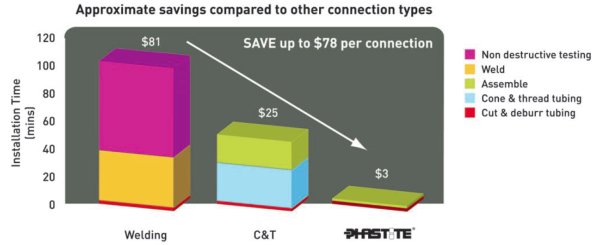Reasons to consider on-site Nitrogen Generation
15/10/2019 12:17 pm
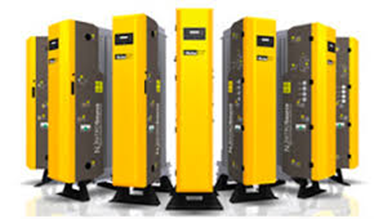
Most of the world’s industrial nitrogen is created through large scale cryogenic separation at an Air Separation Unit (ASU). This is normally sold to end users as a liquid at nearly -200°C and stored in insulated vessels or it is evaporated to a gas and compressed at pressures up to 300 barg into high-pressure cylinders.
However, there is a better and more sustainable option, which is to become self-sufficient and produce your own nitrogen gas with an on-site nitrogen generator. This not only eliminates the on-going costs associated with bulk delivery and storage, but also offers significant safety advantages.
This blog examines the three traditional gas supply methods and reasons why plant managers should consider using an on-site nitrogen generator as an alternative.
Cylinders and manifold cylinder packs (MCP)
Single nitrogen cylinders and manifold cylinder packs are supplied in a variety of volumes and fill pressures. A major pitfall in using cylinders is that the stated cylinder capacity is not the actual usable gas volume, this depends on required delivery pressure and the need to guarantee the purity of gas.
The main reason for industry dependence on gas cylinders is that this is the way it has always been done, and plant personnel are comfortable with the process. Plant managers may be unaware that there are hidden costs with cylinders that can add up fast and significantly increase overall operating expenses.
Rental costs
Usually, three cylinders or MCPs are on site at any one time. One empty awaiting collection, one in use, and one full awaiting connection. All will be charged rental fees.
Location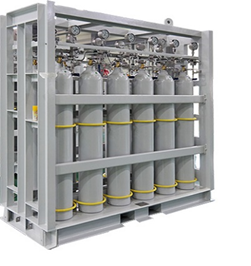
Cylinders have to be secured in purpose-built racks for safety. MCPs have a large footprint and take up valuable floor space. Both need to be located in an area where a sudden release of gas cannot cause asphyxiation.
Handling
Cylinders and MCPs are heavy and require special equipment to manoeuvre them into position — a time consuming and costly process, not to mention the safety implications.
Wastage due to pressure loss
To ensure gas quality above 34 barg cylinder pressure, most industrial applications require a laboratory grade, built-in purifier cylinder equipped with internal consumable adsorbents, which adds considerable cost.
A standard 230 bar g cylinder carries the risk that the remaining 14% percent of the gas in the cylinder could be contaminated with water vapour and organic impurities (such as oils). These impurities are adsorbed into the surface of the cylinder walls and desorbed as the pressure reaches and drops below 34 barg.
This contamination can build up over time and coat the pipework, regulators and application. The only way to prevent it is to stop using the cylinder supply when the pressure drops to 34 barg. This equates to a 14 percent waste of money and gas for every cylinder or MCP.
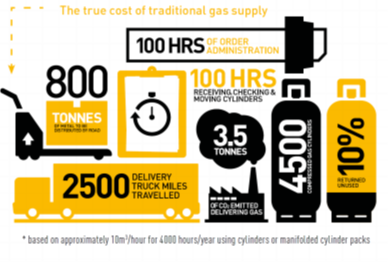
Mini-bulk storage
Insulated liquid nitrogen vessels include an integral evaporator to convert the stored liquid to a usable gas. Mini tanks are supplied in various capacities and pressure options, and share all of the above highlighted issues with gas cylinders but also have one particularly unique concern: off-gassing. Off-gassing is a problem common to all types of gaseous liquid storage as liquid nitrogen is constantly being converted to gas and so leaks out from the dewars. Therefore, if a company is not constantly using its supply, it is slowly being wasted.
Low flow rates.
Because of the internal evaporator, flow rates are limited to relatively low levels given the stored capacity.
Temperature duty cycle
Also, due to the internal evaporator, extra time must be allowed for the temperature to achieve a sufficient level so as to ensure complete evaporation of the liquid.
Static evaporation losses
It is not possible to have a 100% efficient heat insulated vessel, so ambient conditions cause the liquid to heat up and evaporate. It is then vented to atmosphere (wasted), through a safety valve to prevent over pressurization on the vessel.
Some vessels have an economiser circuit that allows gas boil-off in the liquid vessel to be transferred to the gaseous phase of the evaporator. However, this is only useful when gas is being used by the application. When the economiser is not in use, the pressure builds and it is lost to atmosphere.
Bulk liquid vessels
Whilst companies don’t have to worry as much about operator liability or workplace safety, bulk storage tanks have their own set of hidden costs to be aware of.
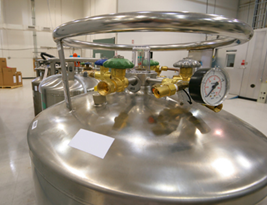
Bulk vessel heat leak
Cryogenic liquid storage vessels are designed to be as efficient as possible to minimize heating of the very cold liquid nitrogen at -196°C. However, some heat leak into the vessel is inevitable as no vacuum vessel is 100% efficient. The heat absorbed by the liquid will cause some of it to be vaporized into gas. This gas is called boil off. This boil-off is:
- Retained within the tank causing the pressure of the gas to rise
- Used by the customer through the economiser circuit
- If it is retained within the tank and the pressure rises above the safety limit, it will be vented to atmosphere and wasted
In reality, a certain amount of all three scenarios will occur. However, the more intermittent the demand for gas, the more potential there is for waste through boil off.
The table below details a typical monthly boil-off rates.

Demand
A liquid tank used for standby, back-up or peak shaving is potentially very wasteful due to lack of demand or high boil-off rate. If a customer has too big a vessel for their application (for example if they originally had a high demand then this dropped but they kept the original vessel), there is a high potential for gas wastage.
If not used, a bulk vessel will lose all of its contents within approximately 3 months.
On-site nitrogen gas generation
Nitrogen generators utilize proprietary selective permeation membrane and pressure swing absorption (PSA) technologies to produce high purity nitrogen from compressed air. Nitrogen generators are designed to continually transform standard compressed air into nitrogen as safe, regulated pressures without operator attention. An on-site N2 generator will eliminate all of the above problems and increase profitability, reliability and sustainability.
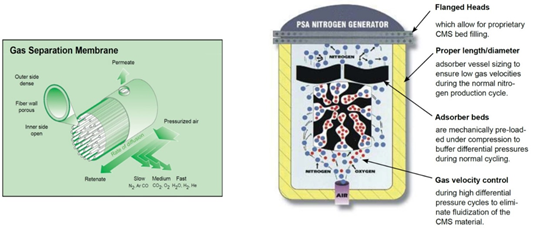
A Parker NITROSource generator, for example, offers a unique design and advanced energy-saving technology that requires less compressed air to generate more nitrogen. Substantially lower servicing costs, reduced downtime, and longer working life make it the most cost-efficient nitrogen supply available. Additional benefits include:
- Increased profitability – significantly lower unit gas cost, more up-time, NITROSource also incorporates energy-saving technology which matches demand to the application resulting in the user making further savings
- Increased reliability – gas available on demand 24/7, only pay for gas produced
- Sustainability – short payback on investment, long service life, low energy use and reduced CO2 footprint
With Parker’s vast industrial application knowledge gleaned over almost 30 years of designing and manufacturing gas generation systems, VFV is ideally suited to be able to help any customer to convert from delivered gas options to produce their own gas on demand.
For information on how Parker's NITROSource System can help with your gas needs please contact VFV at [email protected].
Reliability, speed and simplicity: Embracing new technology to improve offshore fittings
21/01/2019 1:29 pm
Offshore gas and oil projects are high risk and high yield operations that require all your equipment to operate at peak performance – including tube fittings and connectors.
But deep-water projects come with unique challenges, including extreme pressure and large implementation costs, which make fitting reliability both more important and more difficult.
Traditionally, welded fittings have been utilised due to their durability and long-term reliability in these high-pressure environments. However, welding solutions also come with various risks of their own, which can result in increased downtime and costs.
Time is money — and welding requires both
Welding is widely used throughout the industry as the primary option for reliable fittings. However, implementing welded fittings presents three major challenges to your oil and gas operations:
- Decreased safety: Welding carries with it a range of safety risks and hurdles to overcome. And when applied within a high-risk oil or gas environment, you need to ensure multiple precautions and permits have been set in place in order for works to commence.
- Lack of speed: Welding is not a quick endeavour. First comes the preparation of permits and planning – then the actual work, which can take days if not weeks to complete. And finally, time consuming inspections and NDT need to be carried out.
- High costs: Adding together the safety risks, plus the highly trained professionals required, as well as the potential shutdown of production, and you have yourself a very costly endeavour – up to hundreds of thousands of dollars per day.
Today, many operations have processes in place to deal with these drawbacks of welding. But what if these processes – and the setbacks themselves – could be avoided completely?
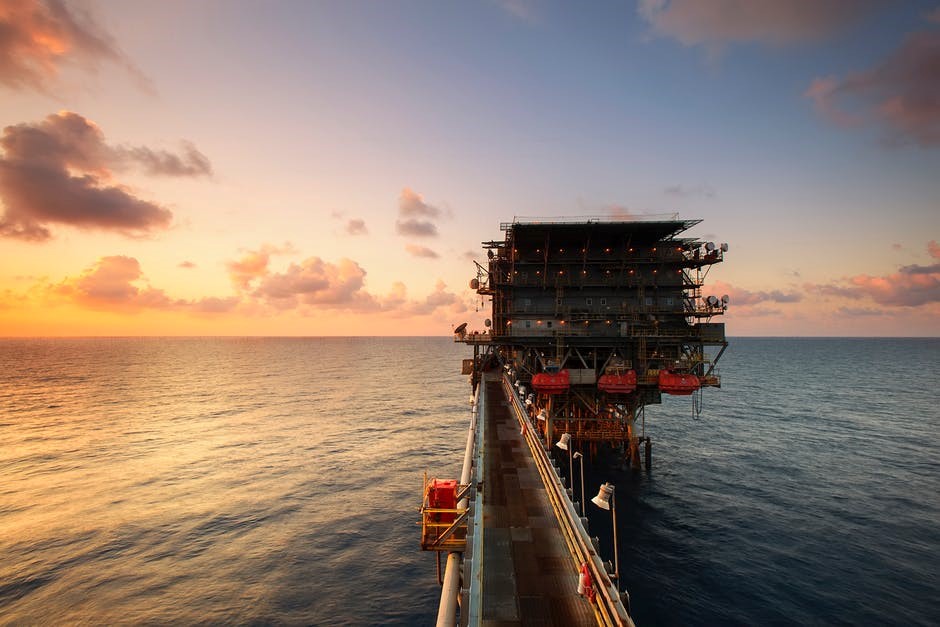
Work smarter, not harder
Ensuring reliability is likely your number one concern when it comes to tube fittings, which is why you may – like many others – rely on welded fittings in the first place.
But the risks associated with cost, implementation difficulties, and length of durability of welded solutions remains increasingly high.
Overcoming these challenges means adopting a fitting that can:
- Guarantee durability under extreme pressure and throughout lengthy projects
- Be quickly and easily assembled by anyone, in any situation
- Support your operation without affecting safety, quality or reliability.
How BP and ConocoPhillips are using new tube fitting technology to their advantage
While welding is a long-used and effective solution, advancement in tube fitting technology has proved that it is no longer the only solution.
Recently, BP Exploration’s Bruce Field – a major drilling platform in the North Sea – experienced damage to important hydraulic services. Welding was an unattractive option, due to the costly downtime of the works, and the location of the damage making a hot work permit almost impossible.
Parker’s Phastite tube fittings were put forward as a potential solution due to their quick and simple assembly capabilities. Once a demonstration and independent testing was carried out, Phastite was approved by both BP and their independent contractor.
After a short training course, the contractor was able to easily apply Phastite to repair the damaged area without interrupting production, resulting in:
- Saved time
- Reduced costs
- Avoidance of permits
Similarly, ConocoPhillips have undertaken testing in association with Parker Hannifin to determine the eligibility of Phastite for their oil and gas operations.
After finding significant challenges due to fluctuating pressures and temperature, fluid and gas exposures and vibrations, ConocoPhillips were looking for a solution to their specific needs.
The extensive Phastite testing and subsequent design changes have resulted in ConocoPhillips to actively seek opportunities for its use, believing it will strongly benefit their operations.
Embracing the challenges for a better alternative
Guaranteeing performance without having to wear the costs and difficulties of welding is proving to be the way forward for complex offshore projects.
Parker’s Phastite tube fittings were originally designed to reduce assembly times without reducing the quality and durability of the fitting.
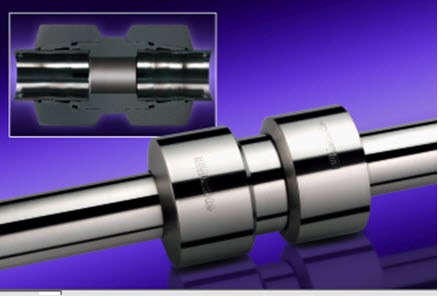
Parker has tackled the existing industry challenges to create an alternative fitting that:
- Ensures 100% leak-tight performance
- Has been rigorously and repeatedly tested
- Has proven effective up to depths of 20,000 feet
- Can be assembled by anyone, without specialised training – drastically reducing your assembly time and costs
- Requires no special equipment to assemble, improving safety conditions
Importantly, you can experience the technology before purchase. Phastite can be easily demonstrated, allowing you to completely understand and test the technology before applying it.
VFV have extensive experience with Parker’s Phastite fittings and tube connectors and are experts in catering to the needs and challenges of the Australian market.
For training and/or demonstrations of Phastite, get in touch with us on (03) 9873 1400 or click here for more information on available products and advice.
Partnerships don’t come much bigger than this one: Petrochemical giant Royal Dutch Shell recently signed an Enterprise Framework Agreement (EFA) with process instrumentation leader, Parker-Hannifin.
The EFA stipulates that Parker will be the single-source supplier for instrumentation valves, manifolds, process-to-instrument valves, fittings, tubing and various other instrumentation products to Shell’s global operations for the next five years.
So, why did Shell choose to partner with Parker’s instrumentation-arm and what can you learn from their decision? The biggest lesson for Australian oil and gas operations is in reducing fugitive emissions.
What are Fugitive emissions, and why are they a problem?
Fugitive emissions are an extremely damaging and costly by-product of petrochemical processing, caused by tiny leaks in instrumentation — most likely a problem you didn’t know you had.
The average oil refinery leaks anywhere between 600 and 10,000 tonnes of methane gas every year — with at least 70% coming from fugitive emissions.
Aside from causing significant environmental damage and contributing to greenhouse gasses, fugitive emissions radically increase operational costs for petrochemical processing facilities.
These costs affect every stage of petrochemical production — occurring at the downstream, midstream and upstream levels. And this directly impacts operational costs, namely because of:
- Labour and materials required for leak repairs — this is an ongoing requirement, as leak fixes are typically only temporary.
- Wasted energy — if your site isn’t reliably processing and transporting gas, you’ll quickly see a decrease in production efficiency and subsequent profits.
- Environmental fines — serious leaks and high emission levels are increasingly being targeted by government fines and other penalties.
- Clean-up costs — the worst fugitive leaks require costly clean-up efforts, and failure to meet these requirements result in serious fines.
- Lost revenue due to poor environmental reputation — if your fugitive emissions are high enough that they’re causing an increasingly negative impact on the environment, you’ll risk losing your social licence to operate.
If you were unaware of fugitive emissions previously, then they have the potential to be a severe financial drain on your oil and gas operations. However, they also represent a unique opportunity to easily and simultaneously reduce your operational costs and improve your green image.
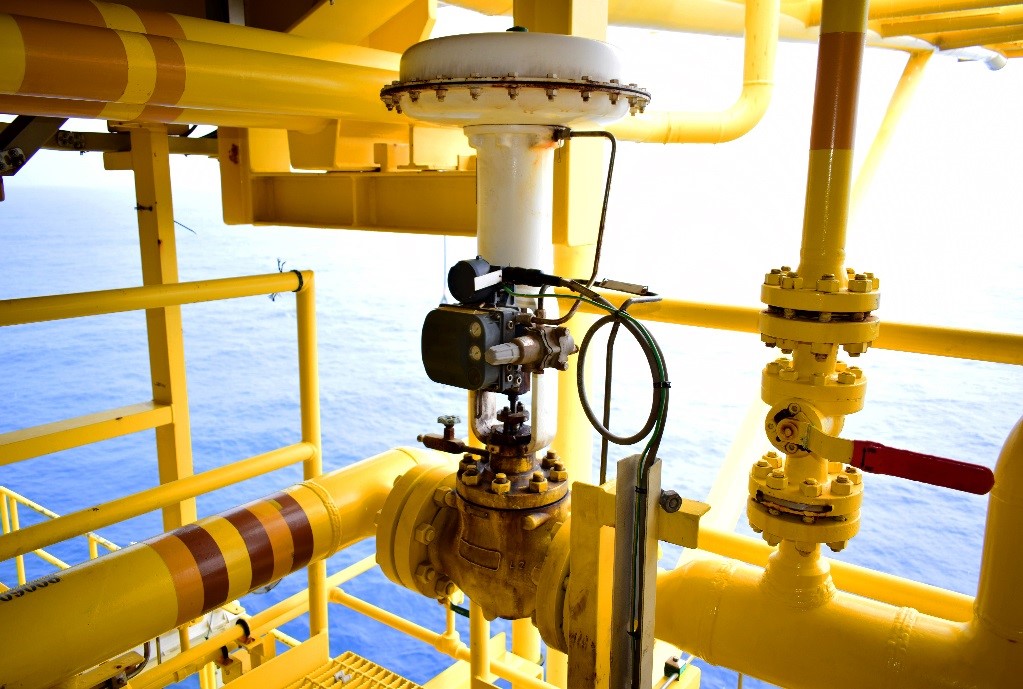
Fugitive emissions are responsible for the majority of methane leakage in oil and gas operations.
How Parker is leading the charge against fugitive emissions
For an oil and gas operation of the size and scale as Shell, reducing or eliminating the associated costs around fugitive emissions is critical. And from an environmental standpoint, it is frankly an issue too large to ignore.
So how do Shell handle the issue? With Parker-Hannifin, of course.
All of Parker-Hannifin’s instrumentation products adhere to the ISO-standard 15848. This standard sets out a requirement of zero fugitive emissions for any process components that are involved in handling hazardous fluids or volatile air pollutant.
For Shell, this was the driving factor behind the selection of Parker for the EFA, with an audit around Parker’s production processes and resistance to fugitive emissions being crucial to the final agreement.
Parker’s wide-ranging instrumentation components have adhered to these standards — as verified by independent third parties — for several years, and their products are some of the most leak-resilient process instrumentation components available on the market today.
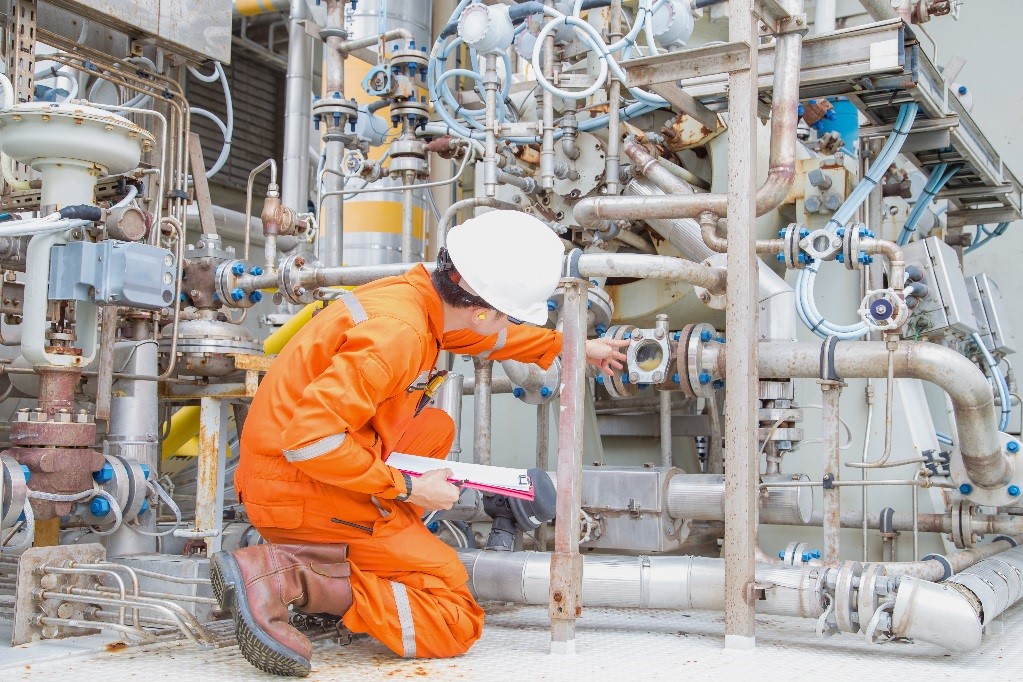
ISO 15848 is component standard that ensures the minimisation of fugitive emissions in instrumentation.
How you can prevent fugitive emissions
There is an excellent lesson to be learned from the EFA between Shell and Parker — fugitive emissions are a costly side effect of oil and gas production that can be easily avoided.
Reducing the footprint of fugitive emissions and the associated costs within your oil and gas operation is as simple as ensuring that your instrumentation meets ISO-15848 specifications.
As Parker’s specialist instrumentation partner, VFV is here to help you ensure that fugitive emissions aren’t affecting your bottom line or leaving you exposed to regulatory risk.
If your instrumentation doesn’t meet ISO-15848, or if you are concerned about the impact of fugitive emissions in your operations, then get in touch with Paul La Roche on +61 3 9873 1400 or email at [email protected] to discuss.
If reducing your fugitive emissions isn’t on your radar right now, but you’d like to find out more about current industry insights, check out last month’s blog about Parker’s acquisition of CLARCOR and what it means for Australian Oil and Gas.
Sources:
Breeze, J. (2018). Reducing Fugitive Emissions – Meeting ISO Standards with Process Instrument Valves. Retrieved from http://blog.parker.com/reducing-fugitive-emissions-meeting-iso-standards-with-process-to-instrument-valves.
Parker Instrumentation. (2008). Double Block and Bleed with Ultra-Low Emission Options. Retrieved from https://www.parker.com/literature/Instrumentation%20Products%20Division%20Europe/Cat%204190_FP.pdf.
Parker. (2018). Parker Hannifin signs EFA with Shell for Instrumentation Products. Retrieved from http://www.parker.com/portal/site/PARKER/menuitem.31c35c58f54e63cb97b11b10237ad1ca/?vgnextoid=18ff0305c3102610VgnVCM100000e6651dacRCRD&vgnextchannel=9104fbdc71fd7310VgnVCM100000200c1dacRCRD&vgnextfmt=EN&newsroom=Y&vgnextcat=News%20Release%20Details.
The $4.3 billion acquisition of CLARCOR by Parker Hannifin: What are the big implications for Australian Oil and Gas?
10/09/2018 3:02 pm
2017 was an enormous year for Parker Hannifin. In February, they finalised their largest acquisition to date: the purchase of leading filtration manufacturer, CLARCOR, for an impressive sum of 4.3 billion USD.
This year, Parker held their annual filtration product review in Melbourne. I had the chance to attend the event and speak with Aziz Rehman — the Regional Sales Manager for the newly-acquired Peco brand within Australia.
We spoke about how the acquisition will help strengthen Parker’s filtration product range, and what the merger means for the development of the Australian oil and gas industry.
In our interview, he highlighted the extensive range of specialist filtration products that CLARCOR brings to the table, including:
- Engine/Mobile filtration: their range of fuel, transmission, air and hydraulic fluid filters, and dust collection cartridges.
- Industrial/Environmental filtration: for various industrial and pharmaceutical applications, with a specific focus on general electric air turbines.
- Process filtration: specialist filtration systems for the oil and gas industry.
What does this mean for Australian Oil and Gas?
What I was keen to understand from Aziz was: how will the takeover affect the Australian oil and gas industry specifically?
And the answer was terrific.
With the support of CLARCOR’s comprehensive catalogue of filtration products and technologies, Parker are now able to supply the largest range of filtration products dedicated to the Australian oil and gas industry. They will now supply everything from market leading gas generators to the entire range of process filters used throughout each stage of production, including:
- Upstream production: for exploratory operations and drilling.
- Midstream production: for any filtration requirements within pipelines.
- Downstream production: for the removal of impurities during refining stages.
How you can leverage the new Peco range to optimise your filtration system
Parker’s new range of process specific filtration products will be sold under Peco, an engineering filtration company acquired by CLARCOR in 2007.
Aziz echoed our desire to get involved with oil and gas operators right from the design phase. Collaborating at this stage in the process results in maximum design and filtration efficiency, reductions in overall cost to operators, and guarantees the most effective application of Parker’s exciting new range of filters.
If you have an existing oil and gas operation that needs optimising, and you’d like to find out more about Parker’s new Peco range of process filters, then the team at VFV are well equipped to assist you. VFV is a Parker Specialist Distribution Partner servicing the oil and gas industry throughout Australia, and can assist with product selection, integration, maintenance, and overall system design.
Contact us today on +61 3 9873 1400 to talk about how we can help you integrate the new Peco products within your project. Or if you would like to order a sample filter, contact us here.
Pneumatic system inefficiency: The problem you didn’t know you had
30/07/2018 10:54 am
Since the development of the first mechanical compressors at the dawn of the industrial revolution, the proven efficacy of pneumatic systems has established compressed air as the ‘fourth utility’ of manufacturing. And today, pneumatic systems are as critical to the manufacturing process as they have ever been.
Compressed air is the most reliable, safe and simple means of linear power transfer – in comparison to electric or hydraulic systems – which make them extremely popular in manufacturing facilities around the world.
Read MoreReducing the costs of corrosion: how to choose the best CRA for your project
20/06/2018 12:44 pm
In 2008, it was estimated that corrosion cost the oil and gas industry a collective $1.372 billion – a number that has significantly increased in the past 10 years.
As you’re probably aware, corrosion can have serious consequences for your business. Not only can it impact the length of operating downtime and repair costs, it also poses a severe risk to employee safety and the environment more broadly.
Read MoreThe Insider’s Wrap of AOG 2018
26/04/2018 9:17 am
This year the Australasian Oil & Gas Exhibition & Conference (AOG) was another fantastic event: a three-day exhibition that brought together petroleum industry experts and forward-thinking minds in the oil and gas sector. The key focus of the event was to display the latest in technology and products, and to hear from leading experts in the field. The conference sessions at the event were split into three industry forums centred on Collaboration, Subsea and Knowledge. Topics included decommissioning, flow assurance, NDT, cyber resilience and the workforce of the future.
Read More
